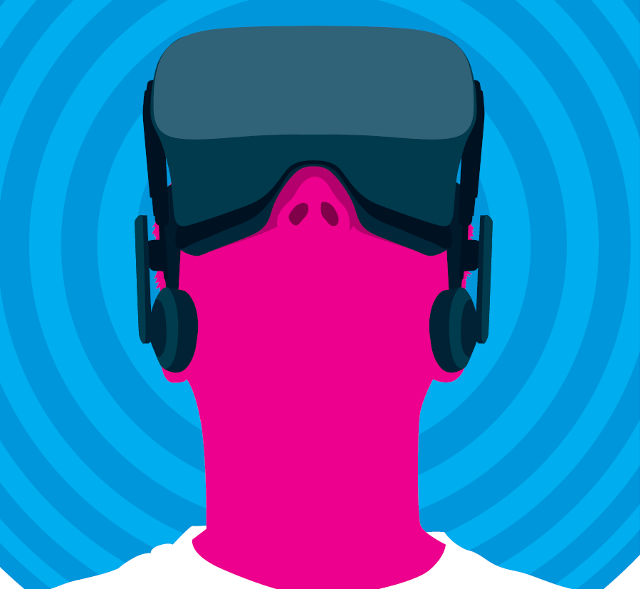
Those of us that have been around the design and engineering technology block a little more than others will know that Virtual Reality (VR) has been around for decades.
Typically the sole preserve of enterprises with big budgets, VR has mostly benefited large transportation or aerospace projects where building full-scale, physical prototypes has been too expensive or taken too much time in today’s reduced cycle times. After all, if you’re developing a 30 tonne construction vehicle or the next super car, you’re not going to be able to build prototypes with every design iteration. This looked to be the status quo for many years… then something interesting happened.
A rebirth of interest
2016 saw the introduction of affordable VR headsets. The two front runners were the Oculus Rift (acquired for a staggering $2 billion by Facebook before it even shipped a production unit) and the Vive from consumer electronics giant HTC.
These VR headsets were primarily designed for consumers, for interactive games and movies. But the tracking and display technology is so good that they can be equally used in professional environments.
Suddenly design and engineering firms could get their hands on entry-level VR hardware for under $1,000, rather than having to spend a hundred grand on a pro grade VR system (think: rear projected VR cave and motion tracked stereoscopic glasses). As a result we are now starting to see a whole new wave of design and engineering VR applications appear for the Vive and Rift.
But before we get ahead of ourselves, let’s step back and look at the benefits that greater interactivity in a virtual environment can bring to design and engineering.
Why VR for engineering and design?
One of the promises of VR has always been the ability to see a product at true-to-life scale without having to build a physical prototype. By keeping things digital, firms not only save cash, but can also make quicker decisions based on shorter design cycles. A full-scale physical concept vehicle, for example, can cost in excess of a quarter of a million dollars and take months to create.
By dramatically bringing down the cost, VR has suddenly become a viable technology for a much wider variety of projects and firms, both for enterprises and SMEs.
With VR, designers, engineers, manufacturers, clients and customers can all experience a product as if it were literally in front of them. It gives you a sense of proportion and scale that simply cannot be matched when viewing a 3D model or rendering on a desktop monitor. Move your head up close to see an engine detail, shift your body to the side to see the chassis from another angle.
While VR will still continue to lend itself to larger scale products such as industrial machinery or white goods, it could also benefi t the development of smaller scale designs, by allowing things like furniture, consumer products and fixtures to be seen in the context of where they will be used.
Ergonomics, production & serviceability
Until you build a physical product, it’s often very difficult to judge the ease with which it can be manufactured or serviced.
While design systems allow you to conduct simulations (clashing, interference, assembly access), the results can never be 100% accurate. The computed result might tell you that the gearbox on a crane can be removed, but it’s only when you test that out in VR using a physics based system, that you can get a full understanding of reach and accessibility.
This can be applied to other areas of ergonomic testing, evaluating how people will interact with products in day to day use. This could be anything from a ticket machine, to a heavy machinery cockpit or a factory work cell.
Visualisation, styling & perceived quality
To date, much of the activity surrounding VR has been on engineering evaluation workflow. But what we’re starting to see now is a move towards high quality VR environments in which the user can view, evaluate and interact with different design variants from an aesthetic point of view.
Irrespective of what type or class of product you’re working on, being able to evaluate it in a realistic environment, as you would in a real world context, is hugely beneficial. And those benefits are not just restricted to the design and engineering teams, they can be extended into sales and customer relations as well.

Image courtesy of BMW Group
Software is fundamental
Over the past six months there has been a groundswell of activity in VR software development for design and engineering.
This appears to be coming from three main camps: traditional VR / digital mockup software developers, CAD software developers and design visualisation software developers.
Experienced VR software developers are leading the charge as they only need to adapt their enterprise class tools for the HTC Vive and Oculus Rift. This includes Dassault Systèmes’ Catia and Delmia product groups, PTC’s ProductView/Creo view set of tools (based on technology from DMU pioneer, Division) and Siemens’ Tecnomatix and other digital factory solutions.
Specialist VR software developers have also repackaged their enterprise tools to make them affordable to SMEs. VR stalwart, Virtalis, for example, has taken elements of its Visionary Render tool and made them available inside VR4CAD, at a much lower price point. ESI Group has also added HTC Vive support to its IC.IDO application.
CAD software developers also understand the importance of being able to take their 3D models into VR. SolidWorks, Solid Edge, Autodesk (Inventor and Fusion) and Onshape are all working on developments. As these vendors are coming to VR from a standing start they have typically been slower to react — with no formal product announcements in the short term. Instead, many are relying on the wealth of partner or third party developers to bring VR tools to their communities.
Perhaps the one exception is Siemens PLM Software, which recently demonstrated Project Dolphin. The company’s mainstream engineering team (Solid Edge) has worked with an outside specialist to develop a well thought out technology demonstration of how VR and games technology could be used to great benefit.
As Jim Rusk, CTO at Siemens PLM explains, “In the mainstream CAD area Solid Edge is collaborating with other groups within Siemens to allow for remote collaboration using Solid Edge generated models and viewing them in an immersive VR environment.
“The prototype solution allows for remote collaboration and enables engineers to carry out design reviews and virtual ramp ups at potentially a fraction of the cost of traditional CAVE environments.”
Moving on to design visualisation, Autodesk was one of the first to deliver support for the new generation of VR headsets into its VRED application nearly two years ago, something that has progressed very nicely with the latest updates (To read our review click here).
The Foundry (developer of Modo) is working on ‘Project Bunsen’, which takes advanced rendering technology and applies it to a VR focused design visualisation workflow.
The Chaos Group (V-Ray) has also been building a set of VR related tools into its various toolsets for sometime and Luxion, developer of KeyShot, has previewed VR related tools for its forthcoming KeyShot 7.0 release.
Traditional hardware vendors are also getting in on the action. AMD, who sells the powerful GPUs required for VR, recently showed off a workflow to take data from CAD applications (using its GPU rendering plug-in, Radeon ProRender) into the Unreal engine, as the basis for creating VR experiences from scratch.
We also expect something similar from Nvidia, given its track record in developing GPU rendering plug-ins (Iray) and its VRWorks toolkit for VR development.
Beyond geometry & visualisation
VR doesn’t just have to be just about geometry and realistic materials. It can also be used to visualise engineering data — the results of simulation studies for examining cooling within large structures, or aerodynamic performance from digital wind tunnel testing, for example.
This is something that John Dimitriou, director of graphics and hardware technologies at Altair Engineering picked up on, “We are still in the early research phase of how and what functionality we would like to bring to our users, however, I feel like having a pre and post processing ability in VR makes a lot of sense. To be able to see life sized models and applying contours, stresses, animations to help find solutions that work or even used for ergonomic testing, etc.”
Collaboration
VR headsets might shut off users from the real world, but VR doesn’t have to be a solo experience. There are a number of software developers focusing on the collaborative potential for VR in engineering. Consider two or more users in the same VR session. They don’t even need to be in the same physical location.
Teams across the globe can use VR to work together on the same dataset, linked up, using standard voice comms, each with an avatar represented in that session, talking, indicating the points of interest and focus.
At the recent SolidWorks World event, start-up Cavrnus demonstrated just this mode of working, allowing separate teams to dial into the same session. French software company middlevr offers similar capabilities in its VR collaboration tool, Improov3. Meanwhile, enterprise VR specialist WorldViz is working on a new communication platform, codenamed “Skofield”, that is said to operate much like a GoToMeeting for VR.
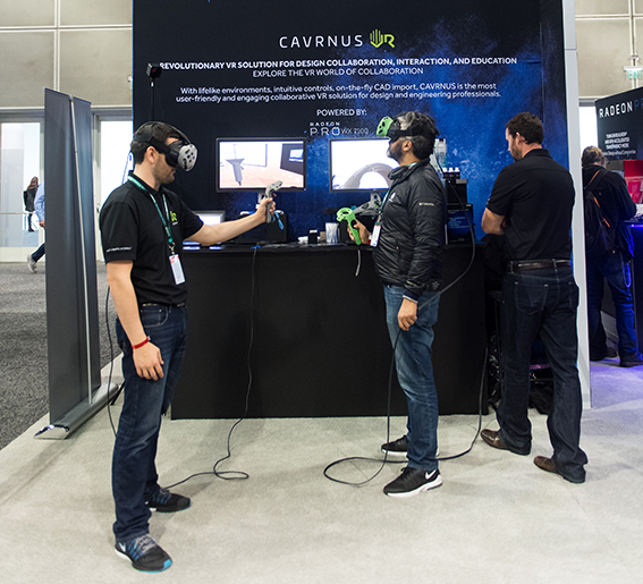
get used to seeing your colleagues staring at the ground or looking up in the air
The impact of consumer software
It’s not only hardware from the consumer market that is impacting how VR is used in design and engineering.
The speed and quality of VR game engines like Unity and Unreal Engine has not gone unnoticed by several automotive firms. Iconic sports car company McLaren Automotive, for example, uses Unreal Engine to check the gap and flush of exterior panels or reach zones and head clearances of interiors. UK firm ZeroLight uses Unity to develop car configurators for Audi and other automotive manufacturers.
Pro VR software developers, including middleVR, IrisVR and Siemens are also building design and engineering focused VR solutions on top of game engines.
The availability of consumer VR software and hardware also puts added pressure on traditional VR software developers and consultants. If you’re selling a solution that uses an $800 device, it becomes increasingly difficult to justify a $1,500 per day consultancy, for two months to set the thing up and get it working.
There is also the issue of pipeline ownership. CAD software vendors like to keep their users inside their own solutions and beholden to their data formats. The rise of VR means that many vendors need to strip back their datasets to achieve that all important 90 frames per second. Many of them may struggle with this if they want to build native solutions.
The alternative is to build these solutions on top of game engines — after all, these are lightweight, efficient and graphically rich, and also built for collaboration across the internet (Call of Duty for CAD, anyone?). But while they are very capable, the engines are completely outside of the sphere of influence of CAD software vendors.
Conclusion
We are convinced that VR is going to become a key technology for design and engineering in the coming years. And while we are only starting to scratch the surface of what is possible, we are very excited about what we have seen so far.
In iits most basic state VR is just a viewing tool, albeit a very good one. However, there is a huge potential to take this further — not only into the traditional stomping ground of digital mockup (ergonomics, assembly, serviceability and manufacturability), but also into marketing, sales and beyond.
One of the most exciting development centres on collaboration, where groups of engineers or designers can inspect design iterations at life scale, regardless of geographic location. But there can also be huge benefits for using VR as a solo experience. By giving designers and engineers push button access to VR, it can become an integral part of the product development workflow.
If this all sounds familiar, then that’s because there are many parallels between VR today and design viz of ten years ago. Back then, design viz was still a specialist skill. Now, high-quality, push-button rendering is available within most CAD applications. We expect the same will happen with VR, making flipping between the real and virtual worlds a natural part of design.
This article is part of a DEVELOP3D Special Report into Virtual Reality (VR) for design, engineering and manufacturing, which takes an in-depth look at the latest developments in software and hardware and what you need to get up and running.
Everything is for a reason How McLaren Automotive unleashes VR to create faster cars with more attention to detail
Quick guide: VR enabled applications A list of what’s out there now or coming soon
Virtual Reality challenges & future Six industry thought leader’s views on the future of VR
HTC Vive: Getting up and running Our experience of working with HTC Vive and how to avoid common mistakes
Workstations & GPUs for VR A back to basics guide to buying hardware for Virtual Reality
The future of immersive engineering Virtual Reality (VR) is the current hot topic, but Augmented Reality (AR) and Mixed Reality (MR) is on its way. We take a look at where things are heading
Game on Amalgam creates game controllers for Holovis
VRED Pro 2017 & VR The latest release adds greater support for the HTC Vive and Oculus Rift tools
Virtalis VR4CAD Offering expertise in VR at a much more affordable level
ESI Group IC.IDO 11 ESI’s IC.ID0 is one of the most advanced Digital Mock Up tools available. With its addition of Vive support, we take a look at what the system is capable of and how it can benefit engineering
Gravity Sketch Beta An interesting take on Modelling in Virtual Reality
Google Tiltbrush A system for VR creativity that’s both cheap and capable
Oculus Medium A good contender for design experimentation
Amari Magnetar V25 This stylish workstation has been specifically designed for VR. But despite its slimsline chassis, you can still cram in incredible processing power
Nvidia Quadro P2000/P4000 Nvidia is changing the landscape of professional 3D graphics with a new family of Pascal Quadro GPUs, including a single slot ‘VR Ready’ card.
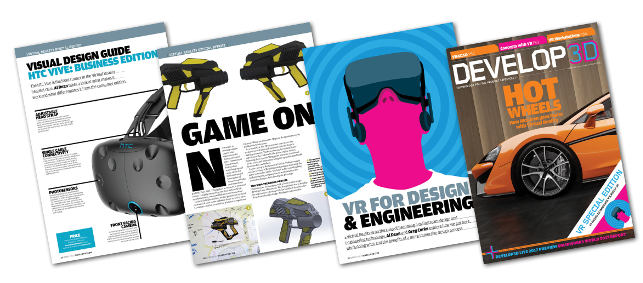
To read all the articles, as they appeared in DEVELOP3D Magazine, you can download the March Edition here.
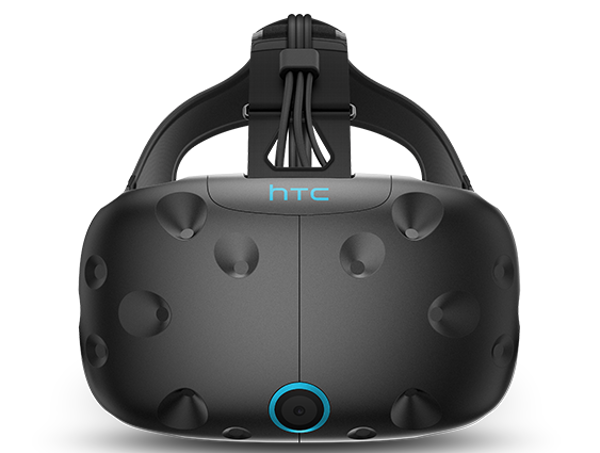
Back to basics: What is a head mounted display?
A Head Mounted Display (HMD) is a pair of goggles that you strap on your head for a fully immersive VR experience. Each eye is shown a slightly different view, fooling your brain into thinking you are inside a virtual 3D world. Wearers experience an amazing sense of presence, scale and depth.
Virtual Reality headsets (or HMDs) have been around since the 1990s, but early models were both ridiculously expensive and offered a relatively poor user experience, due to low resolutions, modest frame rates and poor head tracking.
However, the games and entertainment industry is now driving the market forward at some pace. The Oculus Rift starts at £500, the HTC Vive £750, which puts these low-cost, consumer-focused, but professional-quality, headsets well within the reach of design and engineering SMEs .
With both headsets, most of the heavy-duty processing is carried out by a powerful PC or workstation with a high-end graphics card.
The headset is tethered to the workstation by chunky USB and HDMi cables. This means the wearer has to be careful not to trip over trailing cables, although some VR setups route the cables above head height.
The headsets are quite heavy (around 0.5kg) but are padded and relatively comfortable to wear. Both feature a single 2,160 x 1,200 display, split across both eyes, which equates to a per-eye resolution of 1,080 x 1,200.
This might sound like a lot, but as you are viewing the displays up VR users.
HMDs can track the physical position of the user’s head, so it can be synchronised with the virtual world, which makes them so powerful.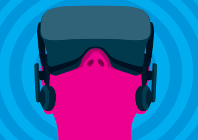
The benefits that greater interactivity in a virtual environment can bring to design and engineering
Default

